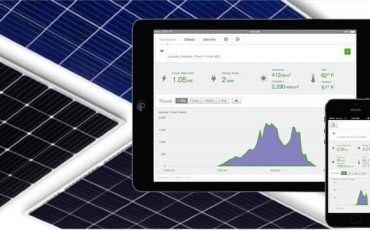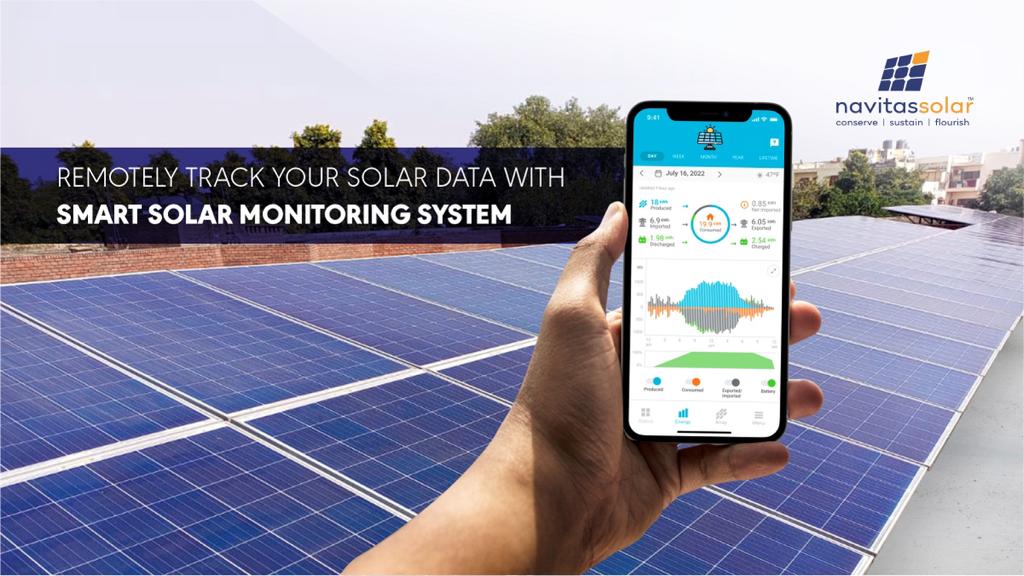Remotely Track Your Solar Data with Smart Solar Monitoring System
The best method to assure the performance of a solar system is to regularly monitor it and take any necessary corrective action. This can be accomplished by installing a solar monitoring system, preferably one with remote monitoring capabilities.
An effective solar energy system plant consists of sophisticated infrastructure that functions in concert to maximise potential electricity generation. Primary system components include solar panels, inverters, solar controllers, and transmission or energy storage systems. Consequently, the functioning of the solar power plant must be continuously checked. It ensures optimal productivity and power supply availability.
Using a remote monitoring system, it is possible to ensure that the system is operating properly and that the electricity generation rate is within acceptable parameters to achieve the intended return on investment for the project. In addition, remote monitoring is essential for periodic maintenance, such as the replacement of components or cleaning of solar panels, in order to maximise the power plant’s long-term performance.

Remote monitoring is especially valuable when a large-scale solar system is installed on a vast tract of land in a remote place. A well-designed remote monitoring system can reduce annual operations & maintenance expenses by 15 to 25%. In addition to extending the life of assets and maximising site uptime, it maximises profitability while increasing generation. There are other benefits too. It can reduce the number of physical visits to the site, and it can give real-time actionable alerts, helping in quick diagnosis of plant glitches or failure, which enables quick troubleshooting. Therefore, remote monitoring of the system is highly advantageous.
Remote monitoring systems is widely used in residential rooftop solar too. It shows daily, monthly, yearly yield of the solar system, as well as it shows real time data, exported energy to the DISCOM, Income statistics, Errors and alerts if any. Data loggers shows the information in form of a graph and the information is kept in a very basic manner so that a layman also can understand the same.
A remote monitoring solution often revolves around a cellular connectivity device. A smart solar monitoring system combines hardware and software to provide a comprehensive monitoring solution for solar systems. It consists of components like a data logger and sensors. The data logger gathers information from all sensors, such as inverters, pyranometers, and temperature sensors. Using a SIM card, Wi-Fi Internet, or LAN internet connection, the Data Logger may send data to a server.

The solar controller, which can output system data, is the brain of a solar power plant. Depending on the size of the solar power plant, a number of solar charge controllers are installed to monitor energy generation data from a collection of solar panels. Using a cloud IoT platform that collects the data and displays it to the operator together with performance metrics and suggested maintenance insights is the optimal method for interpreting this data.
We at Navitas Solar, advise clients on whether they require remote monitoring of their solar systems, after evaluating their specific needs.


 Online | Privacy policy
Online | Privacy policy
Related Posts
You May Also Like
Bonito Series: Driving Innovation in…
Read MoreTOPCon Series: The Next Generation…
Read MoreValuable Points to Remember During…
Read MoreNavitas Planet Partners with Hysolwin…
Read MoreDriving Towards a Sustainable Future:…
Read MoreWhy Do Top-Grade EVA Sheets…
Read MoreBonito Series: Driving Innovation in…
Read MoreTOPCon Series: The Next Generation…
Read MoreValuable Points to Remember During…
Read MoreNavitas Planet Partners with Hysolwin…
Read MoreDriving Towards a Sustainable Future:…
Read MoreWhy Do Top-Grade EVA Sheets…
Read MoreBonito Series: Driving Innovation in…
Read MoreTOPCon Series: The Next Generation…
Read MoreValuable Points to Remember During…
Read MoreNavitas Planet Partners with Hysolwin…
Read More